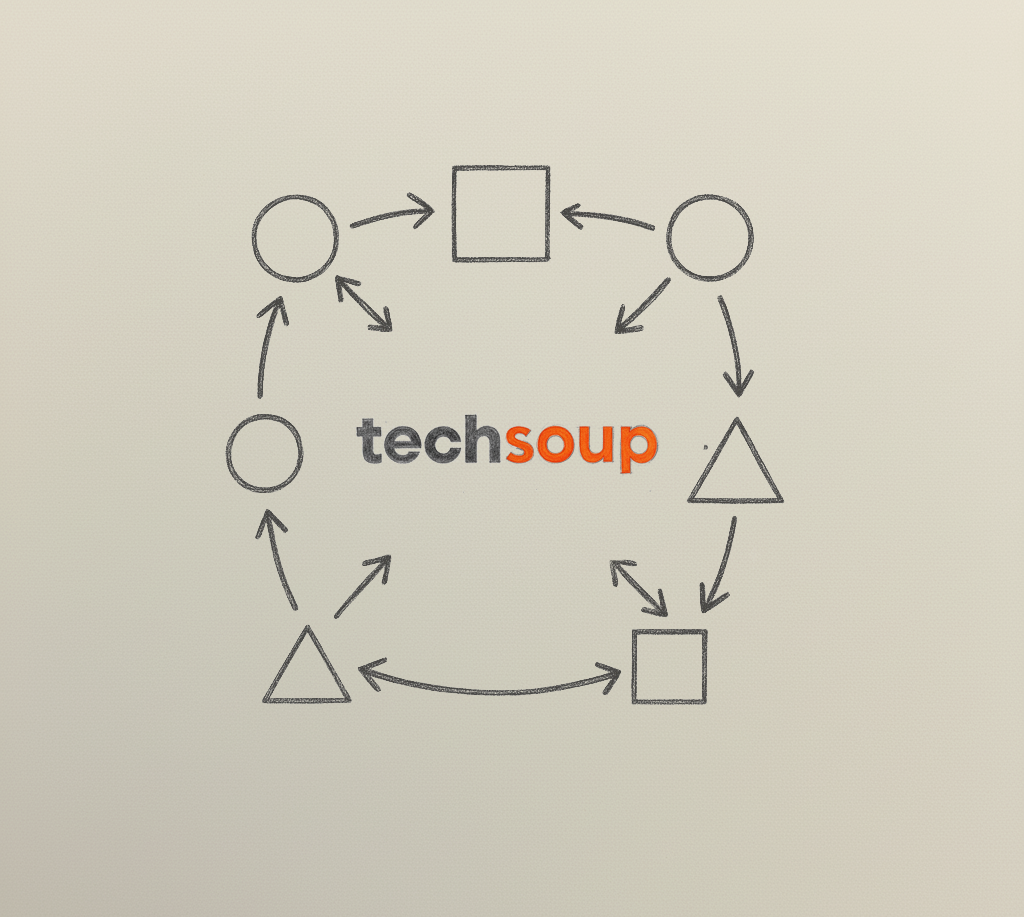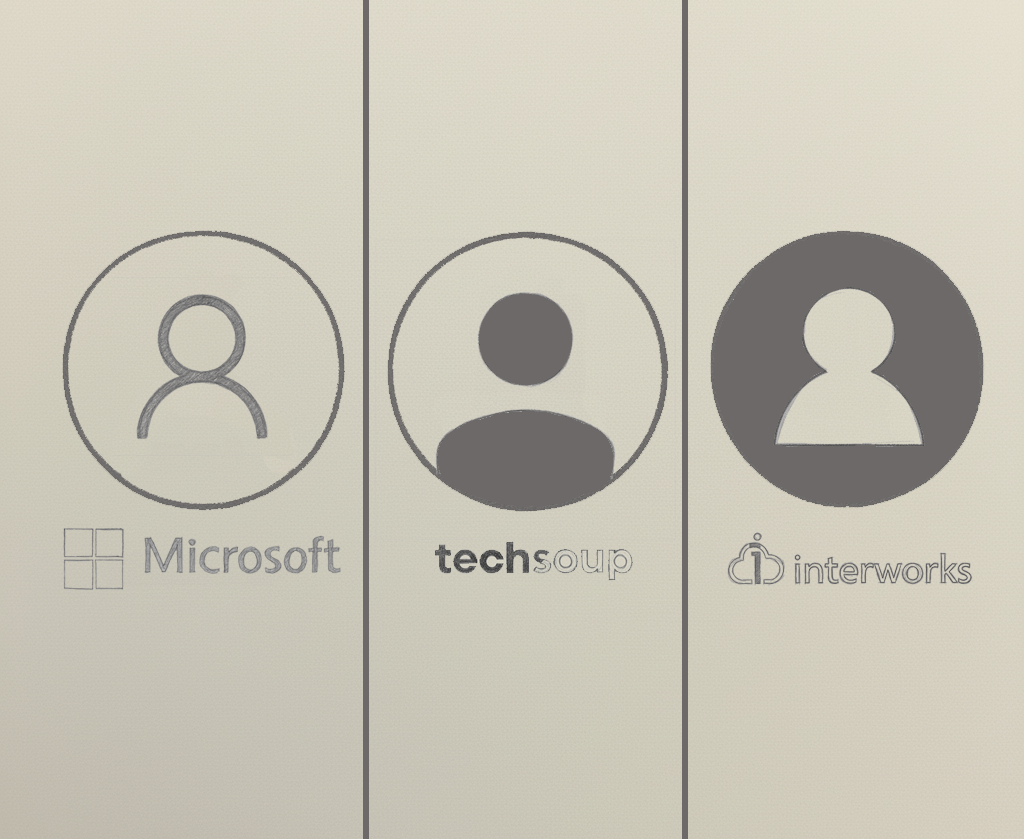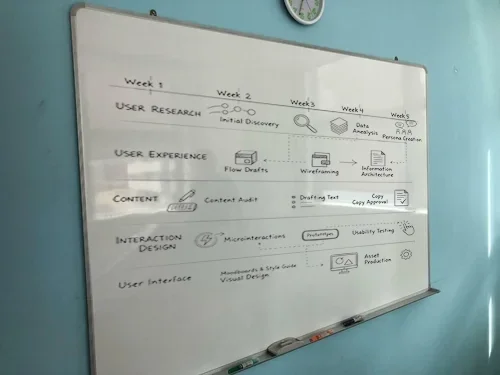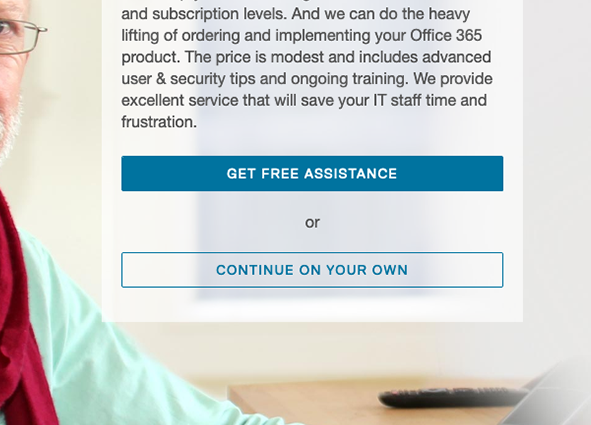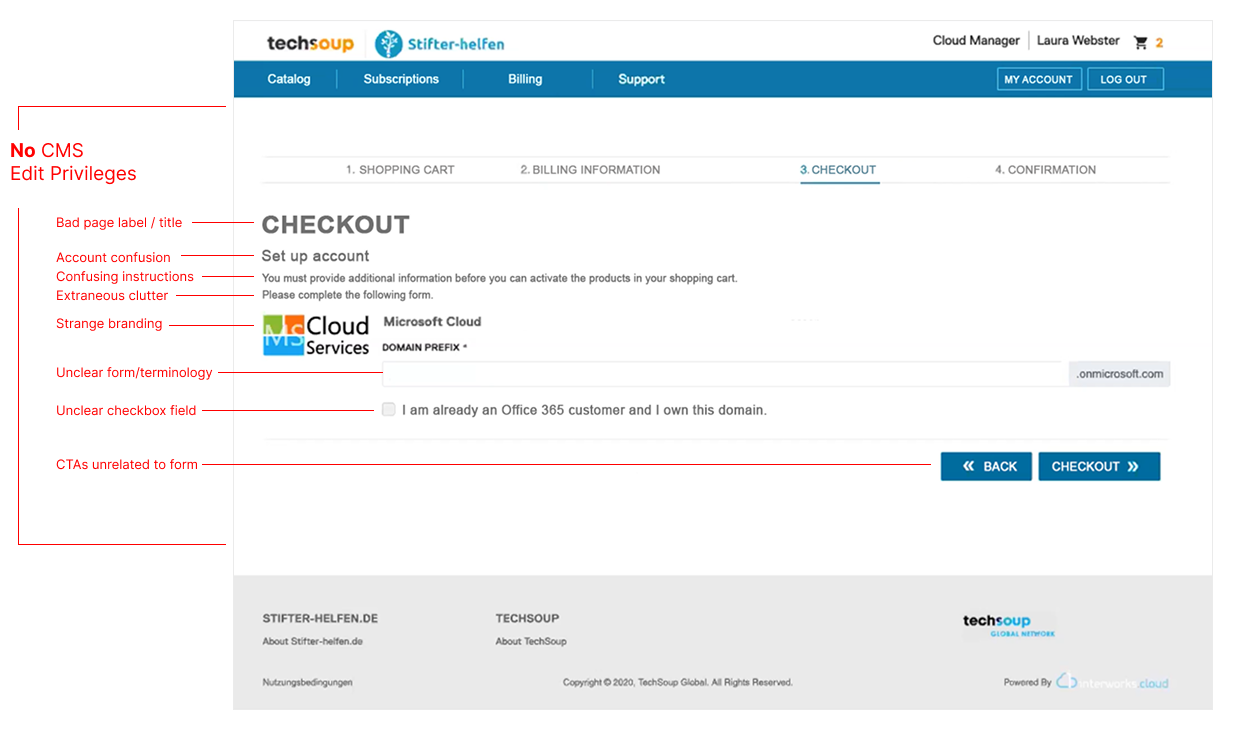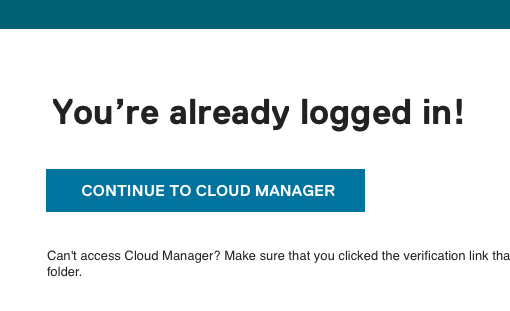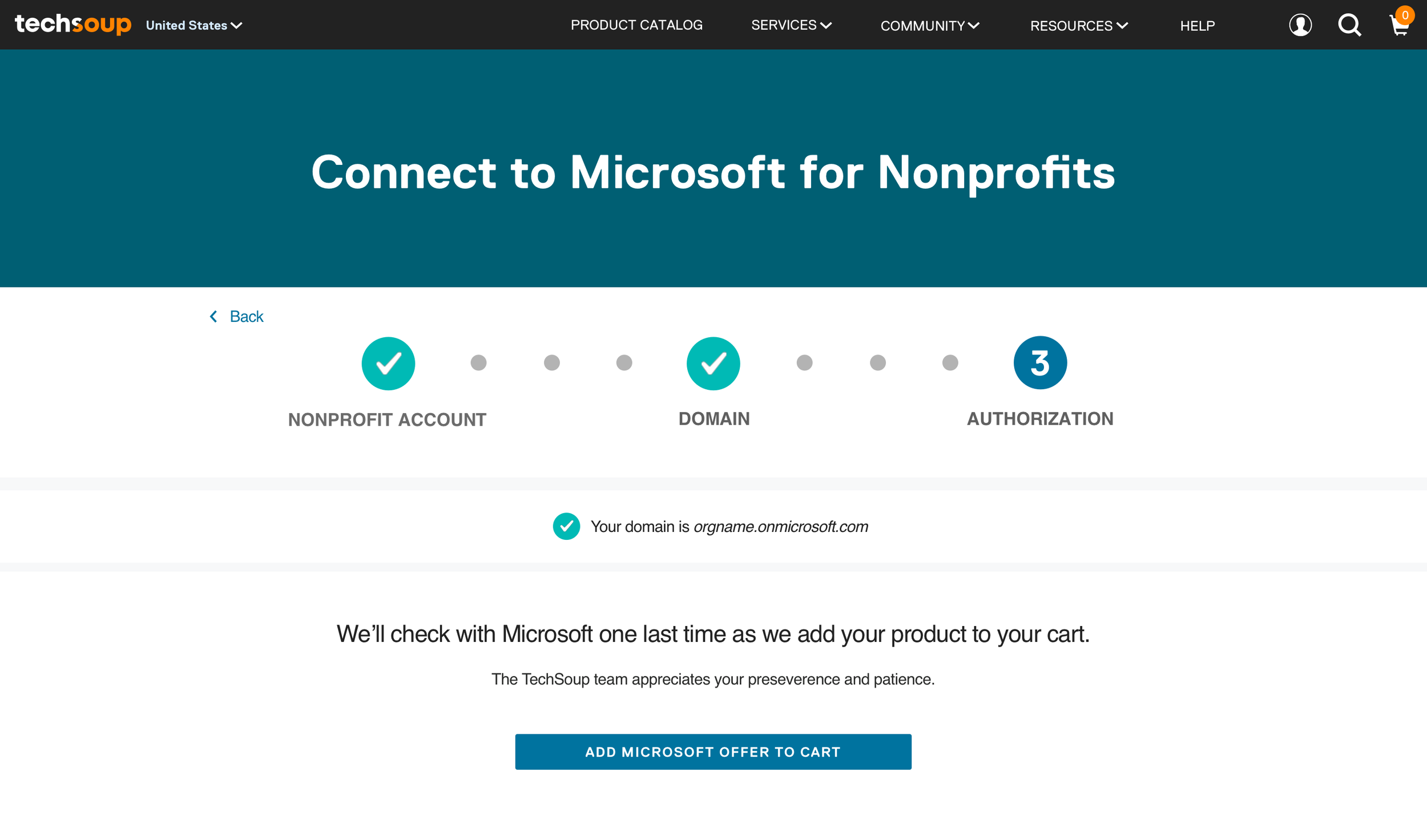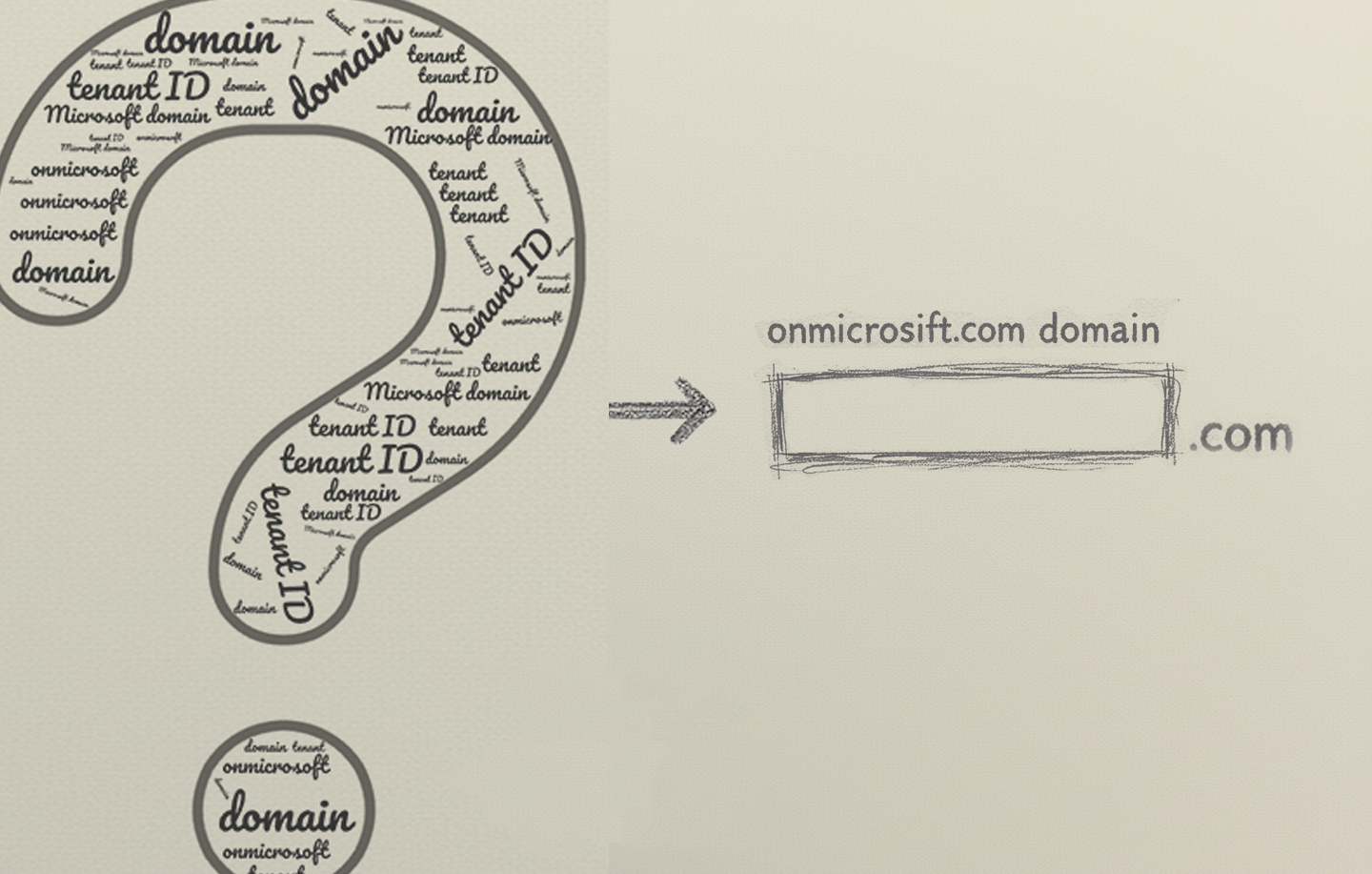CASE STUDY: Tactical UX Focus
Transforming Product Acquisition to Meet Market Shifts
UX design solutions to bridge systems, simplify complexity, and build trust.
Product: Discounted software catalog
Employer: TechSoup
Title: Lead UX Strategist
The Ecosystem
Network of Discounted Tech Catalogs
The Problem — A Microsoft Switch-uation
From downloads to cloud subscriptions.
Subscription purchasing not supported.
Retain users through complex validations & subscription purchasing.
Business Need
The Challenge — Separated Ecosystems
Confusing verification processes
Disconnected systems, multiple accounts
Inconsistent terminology and instructions.
Limited technical flexibility
My Role
Product & UX Lead
Principal Designer
UX Writer & Content Lead
Phase 1
Stabilize, Setup, and Learn
Designed temporary UX to keep users.
Began customizing new licensing tool.
Testing & Design Iterations
Created and facilitated user tests
Interpreted data into design iterations
Report inspired investment in new technology
Phase 2
Faking Single Sign-On (SSO)
Designed pseudo-SSO experience.
Dev Blockers → UX Solutions
Dev can’t trigger one login from the other.
→ I created an interstitial that flowed.
Dev begin both login sessions until email is verified.
→ I created a post-verification trigger to carry the UX.
Phase 3
Integrate API Validations
User-approved API integrations
We Learned, We Iterated
V1
√ Business approved. X Dev blocked → API limitations.
V2
Redesign with dev negotiations → √ Dev approved.
V3
Learned from user tests → √ User approved.
V4
More user tests → √ Usability improved.
Good UX Writing → Big Impact
Data-driven terminology improvements enhanced usability.
Microsoft adopted my terminology.
Outcomes
Business goals met — cloud acquisitions available for users.
Proven usability improvement with new language choices.
Reduced drop-off by 60%; setup time by 30%.
Support requests reduced for both TechSoup and Microsoft.







